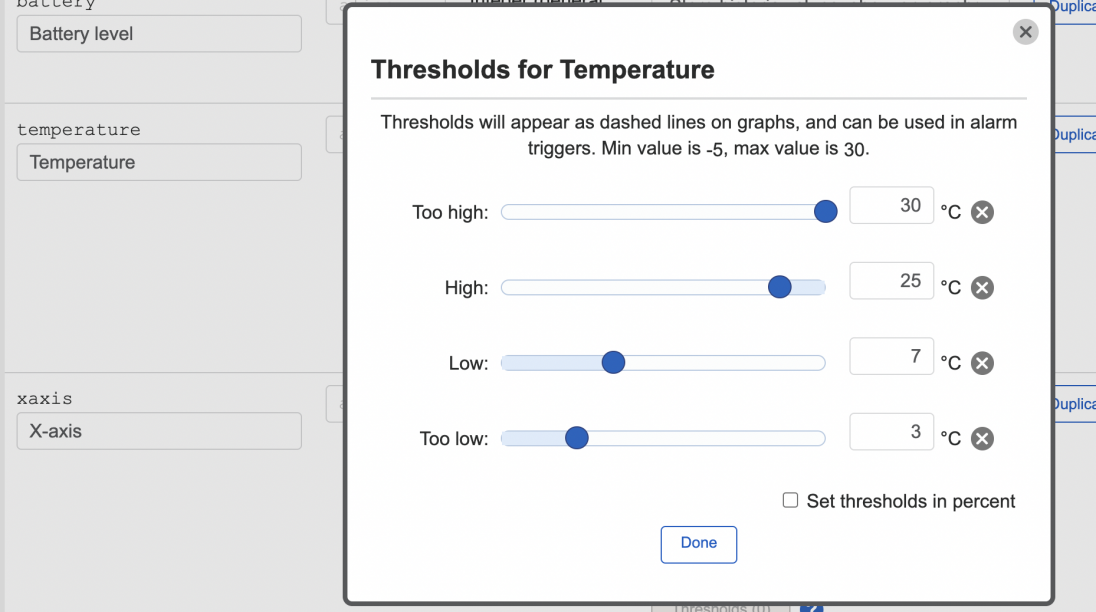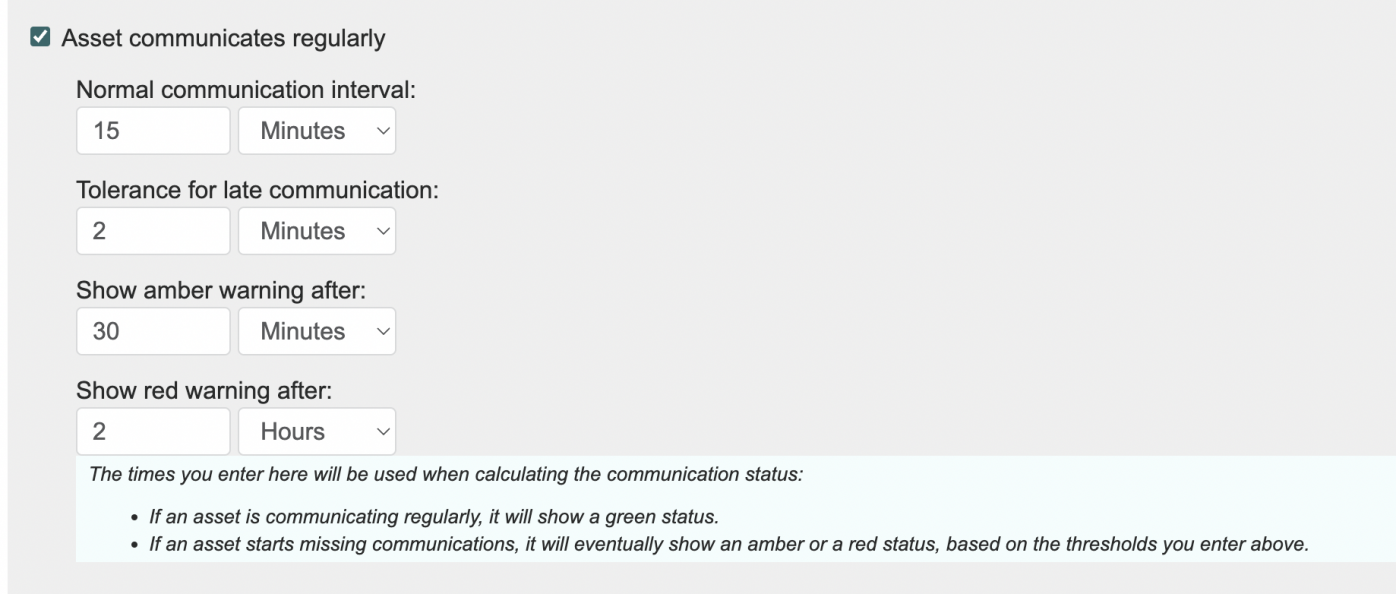Alarm handling
AssetWolf has a range of tools for detecting alarm situations and handling them.
As a user you can define triggers — conditions for an alarm to be raised — and you can determine which asset type (or types) each trigger applies to.
Alarm triggers
Simple threshold-based triggers
Wherever a field, or calculated field, has a numeric value, you can set a working range, and levels that are too high, too low, or warning levels. For example here, for a temperature range:

Calculated field alarm triggers
AssetWolf can perform calculations whenever data arrives, running scripts written in Phi on that data to perform calculations that you define.
Calculations can be simple or can consider many factors. You can set up a custom trigger condition by doing:
if ( # some condition ) {
fireTrigger (triggerCodeName, "explanation")
}
Communication failure alarm triggers
You may wish to trigger an alarm when a device goes off-line for too long.
For example, if a device is meant to communicate every 15 minutes, you may wish to raise an alarm if it hasn't connected for over two hours:

Procedures for handling alarms
You can define a procedure that is followed when an alarm is triggered. This can include:
- an email to a fixed address (e.g. an administrator)
- an email to someone related with the device's location
- a machine-to-machine "command", for example to tell the device to do something
- an SMS text message.
Advanced alarm handling with alarm severity levels
An alarm event, once triggered, has a range of severity levels. These handle situations when:
- If an alarm is triggered, and the condition goes away by itself, a person still needs to acknowledge the alarm (e.g. confirm they've taken some action)
- If an alarm is triggered, and the condition goes away by itself, just log the alarm but don't require anyone to acknowledge or do anything.
So for example, if you're monitoring perishable goods in a refrigerator, and a high temperature alarm occurs, you may need to check the goods.
In this way, AssetWolf has a range of configurable options for handling alarms.
